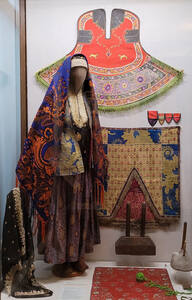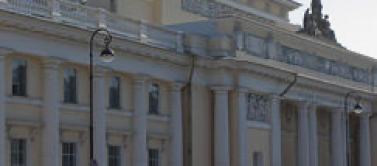Silk in the Traditional Culture of the Peoples of Caucasus

In the South-Eastern Caucasus Region, including the Kur-Araks and Caspian Lowlands, sericulture had been known since antiquity and reached its heyday in the 15th century in the country of Shirvanshahs under Safavid Iran.
In the 19th century, the region was joined by the Russian Empire, which in every possible way contributed to the development of silk production there. Thus, the ‘Practical School of Sericulture,’ established in 1843 in Nukha, trained a whole constellation of outstanding specialists. However, the local population engaged with sericulture in the old-fashioned way: women tended cocoons, and men did the reeling. Silk fabrics were produced mainly in urban workshops by male weavers. In Shamakhi, Shaki, Quba, and other cities of the South Caucasus, artisans produced different types of silk and semi-silk fabrics, like darai, taffeta, sarsenet, satin, damask, alacha, velvet, brocade, etc. To this day, the kelaghayi woodblock-printed headscarf is considered a signature silk piece of the South-Eastern Caucasus. The Jewish community was occupied with the manufacture and dyeing of silk threads for embroidery. Silk embroidery by professional male specialists in Nukha was another signature silk craft in the region.
Some silk products circulated among the locals; others were exported for wholesale trade and picked up by traveling merchants to deliver them to other regions of the Caucasus, including the mountainous regions of the North Caucasus and Dagestan.
Carpet
South Caucasus. Late 19th – early 20th century, Azerbaijanis, Tats
Women’s attire
Baku Governorate. Early 20th century, Azerbaijanis
1. Saddle cover. South Caucasus. 1st half of the 20th century. Azerbaijanis
2. Case for trinkets. Nakhchivan Autonomous SSR; Azerbaijan SSR. Nehram Village. 1st half of the 20th century. Azerbaijanis
3. Quran alcove curtain. Lahıc Village, Baku Governorate. Late 19th – early 20th century, Azerbaijanis, Tats
4. Women’s headscarf. Baku Governorate. Early 20th century, Azerbaijanis
5. Silk thread spooling machines. Quba, Baku Governorate. Early 20th century. Jews
6. Webbing machine. Shamakhi, Baku Governorate. Early 20th century, Azerbaijanis



